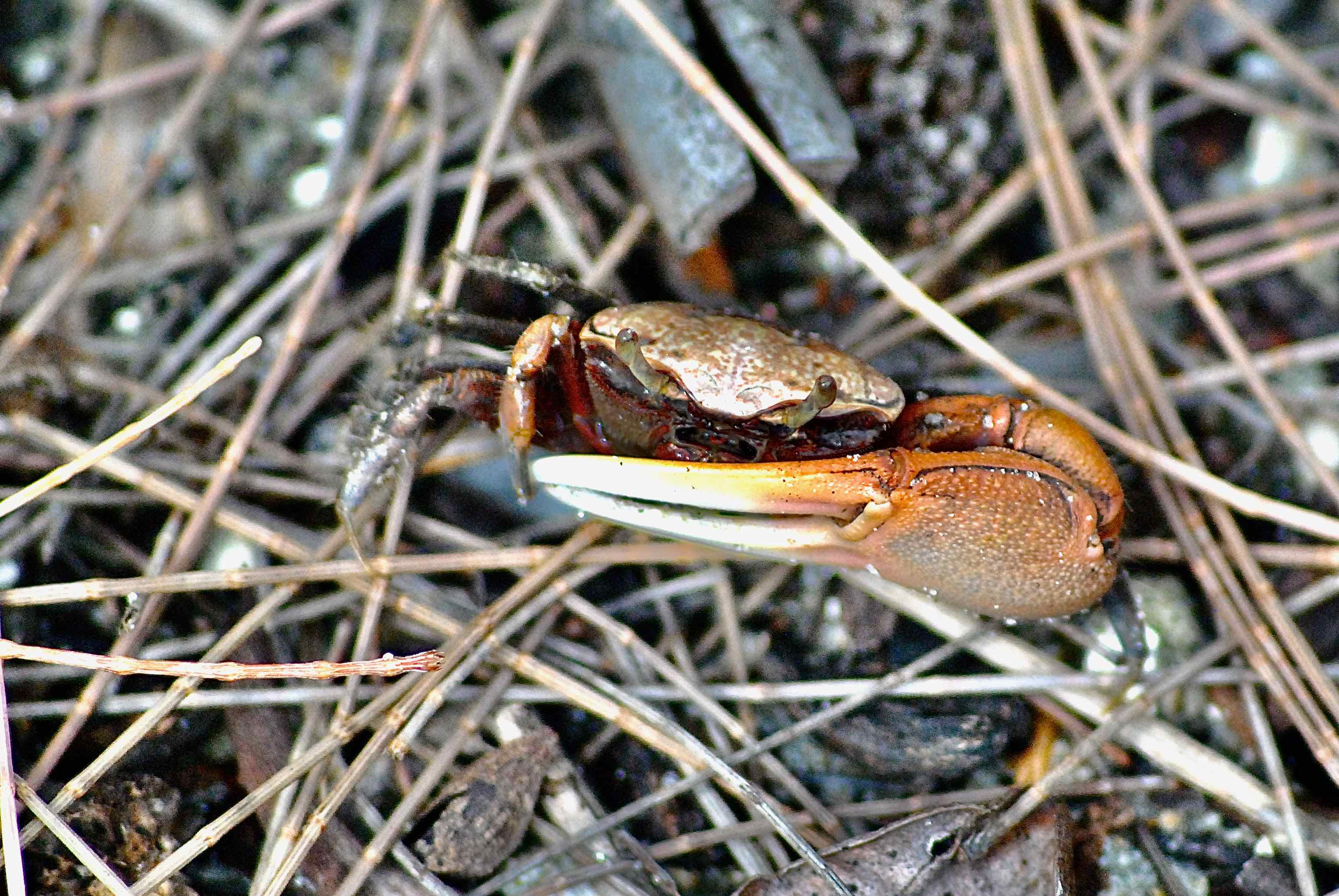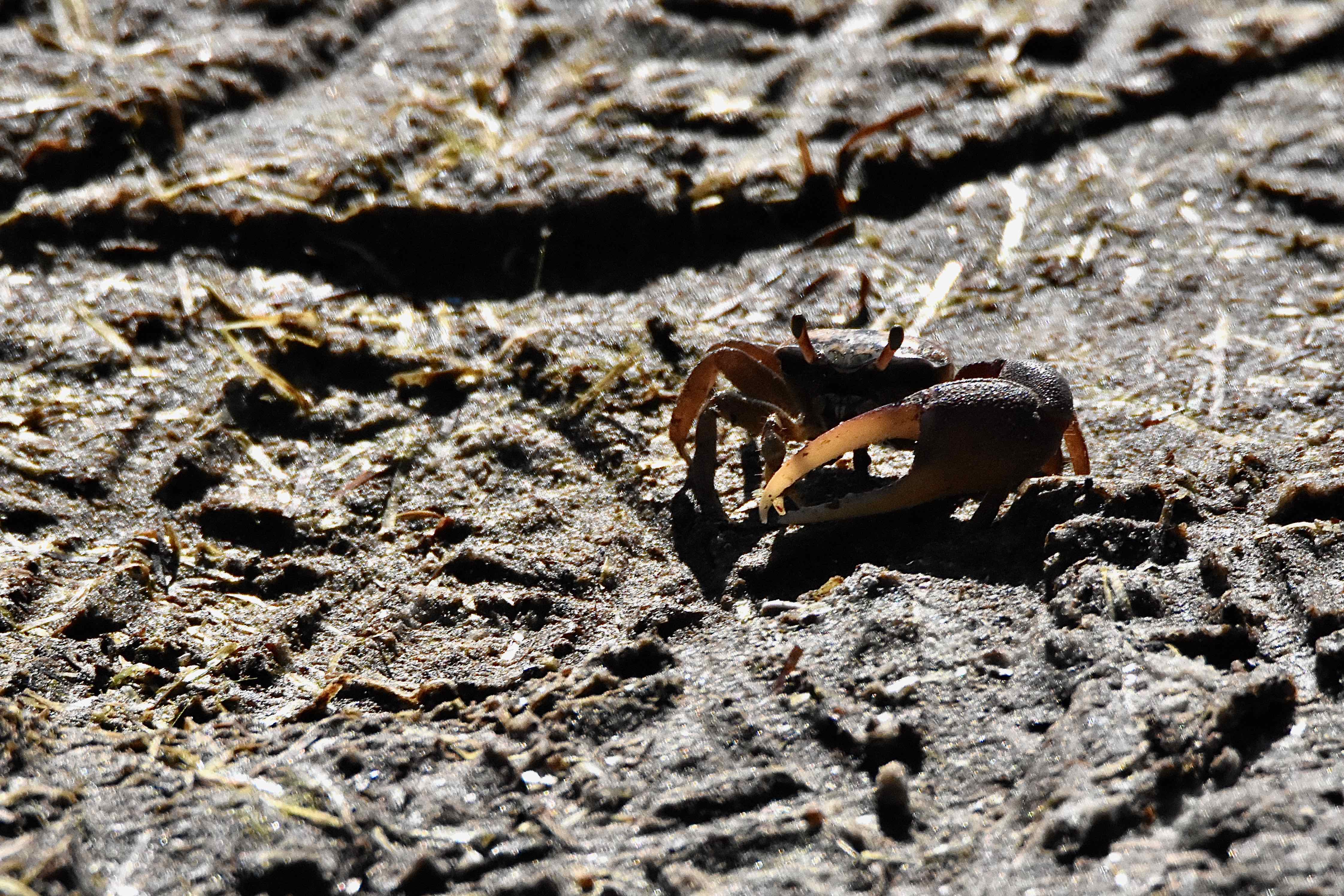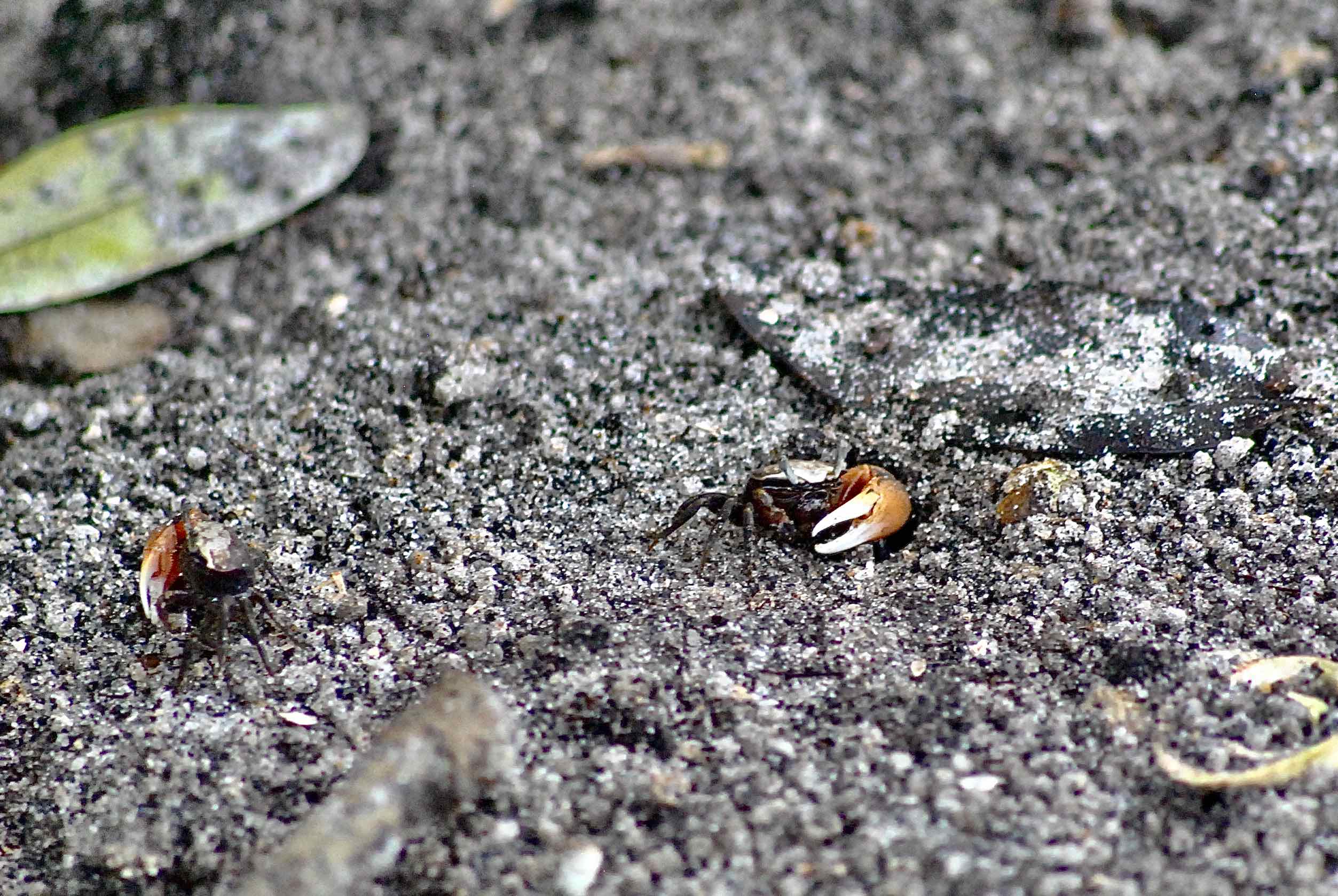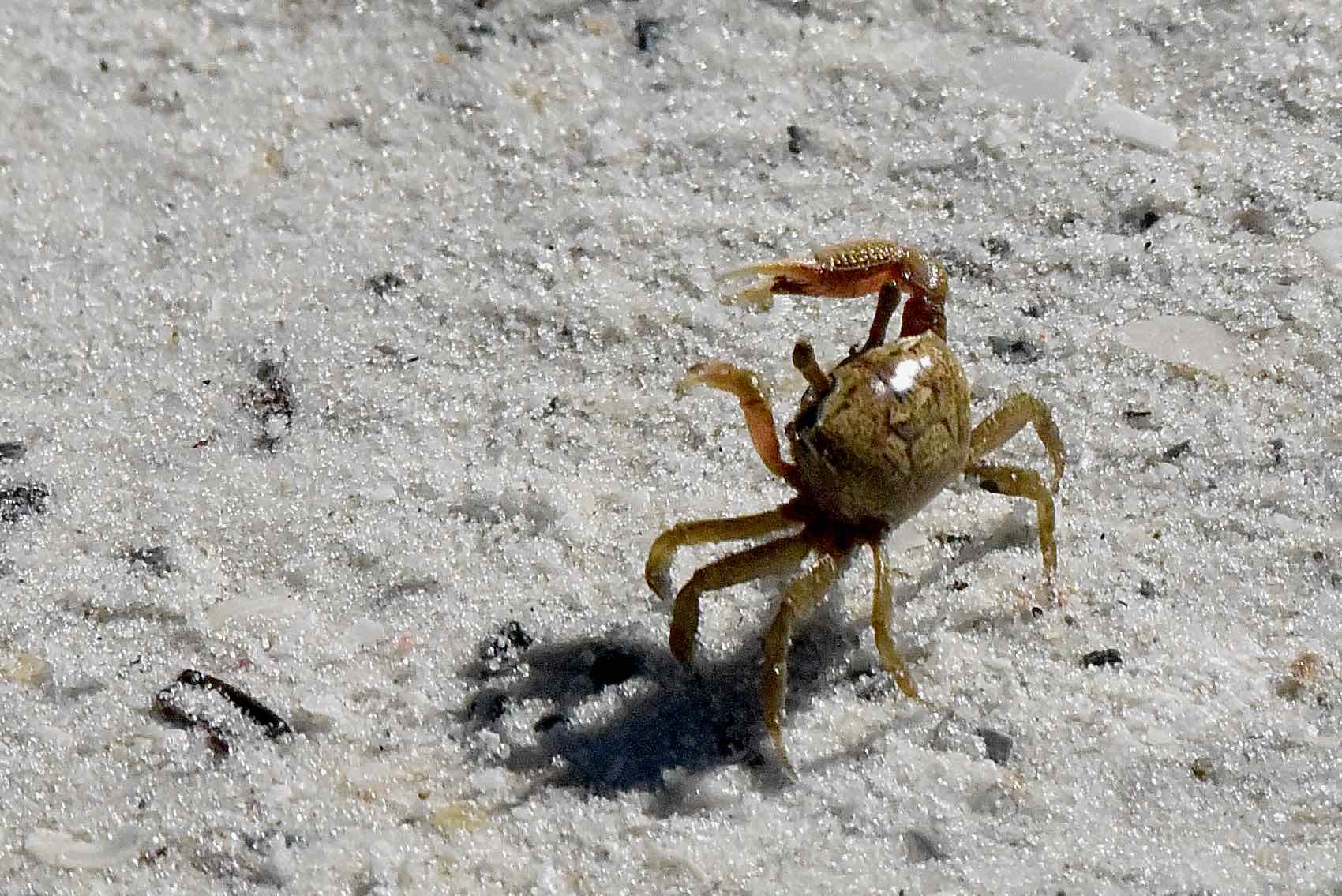
Sand fiddler crab, photographed at Ocean Ridge Natural Area, Ocean Ridge, Palm Beach County, in August 2013.
The sand fiddler crab, Leptuca pugliator, plays a critical role in mud flat and mangrove forest ecosystems along the eastern seaboard, but for the crabs it's not a pleasant one: they're a key link in the food chain. In plain language, their role is to eat small things and in turn get eaten by birds, fish, raccoons and even other crabs. But that's not their only value in the natural scheme of things. More in a bit.
Sand fiddler crabs roam sandy shorelines pretty much from Massachusetts to Texas, including Florida. Their genus, Uca, has more than 100 members living in temperate to tropical places around the globe. They are semiterrestrial crabs, born in the ocean, developing there as larvae, but living as adults on land.
The common name comes from the oversized claws that males possess. Females, however, have two claws that are of equal size. Males wave their large claws like someone playing a fiddle in an effort to attract the ladies of the species and to fend off male competitors. Older males will try to intimidate younger males, keeping them out of more desirable locations, sometimes even to evict them from their tube-like burrows. These claws are so large that they can make up as much as 65 percent of the crab's body weight.
The oversized claws are useless in feeding because because they're just too big in relation to the rest of the body, too awkward to be of much good. Besides, fiddler crabs eat tiny things, so large size isn't really an advantage except to impress the ladies and intimidate other males.
On their menu: algae, bacteria and detritis. Males use their small claw to scoop stuff into their mouths, filter the good stuff and eject the muck and the sand. Females use both claws. Males must spend more time feeding than females in order to get the same amount of nutrition.
In turn, sand fiddler crabs are food for a host of animals from snook and redfish to egrets and herons to raccoons and foxes, making them an integral part of the food chain. They are burrowers, digging tube-like holes typically a foot deep, where they find shelter from tides and predators. They will emerge from their burrows to feed but will quickly retreat when they perceive a threat. When the tide roll in, they'll plug up the opening to keep the water out. They breath through gills, but they don't have to be submerged in order to extract oxygen. The gills do need to be kept moist, however. Their burrows help aerate the sandy, mucky soils where they live, another key role sand fiddler crabs play.
Sand fiddler crabs don't fight often but if a male loses his larger claw in combat, the smaller claw will grow to replace it, and he'll generate a new smaller claw
They are small, about an inch across sans claw. So small that at first glance we've mistaken them for leaf litter. They're not going to be featured on an episode of Deadliest Catch, or show up on the menu of your favorite crab shack. But they do make good bait.
Female sand fiddler crabs will lay as many 15,000 eggs at a time, which she carries around on her abdomen for about two weeks. Come high tide, she will deposit them in the water. The vast majority will die, most eaten by other creatures. But that's Ok. She'll lay another 15,000 and repeat the cycle again and again through summer.
A quick taxonomic note: sand fiddlers were known scientifically as Uca pugliator until reclassified in 2016. Sand fiddler crabs are members of Ocypodidae.



